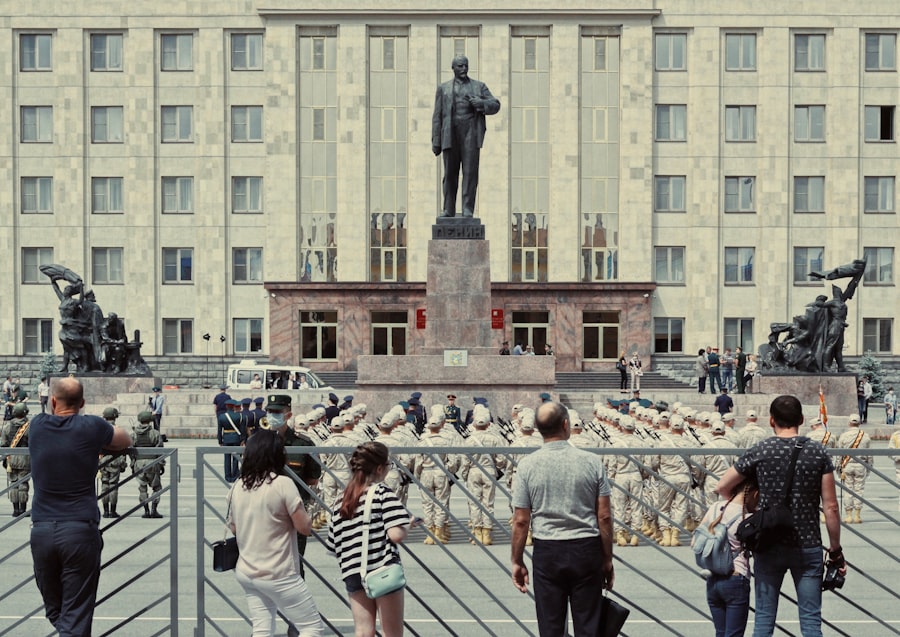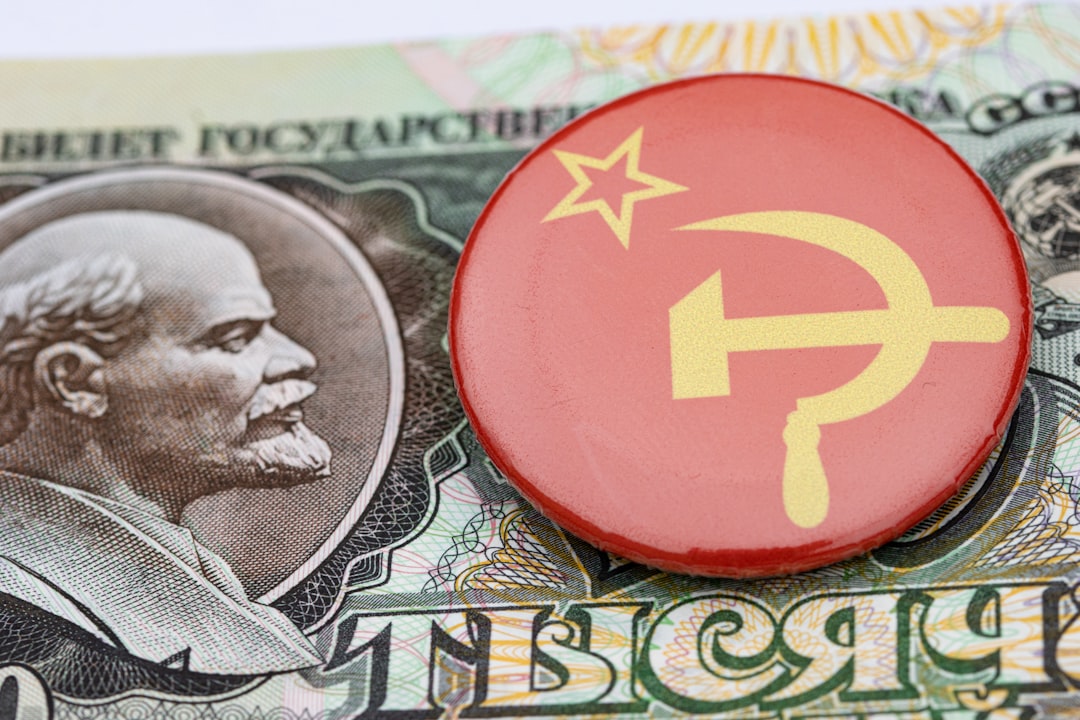The economic legacy of the Soviet Union is a complex tapestry woven from decades of centralized planning, industrialization, and state control. Established in 1922, the Soviet economy was characterized by its focus on heavy industry and collectivization of agriculture, which aimed to eliminate private ownership and redistribute wealth. This system initially led to significant industrial growth, transforming the USSR into a formidable global power by the mid-20th century.
However, the very structure that propelled its early success also sowed the seeds of its eventual decline. The inefficiencies inherent in a command economy stifled innovation and adaptability, leading to stagnation in the later years. As the Soviet Union approached its dissolution in 1991, the economic landscape had become increasingly dire.
The rigidities of central planning resulted in a lack of responsiveness to consumer needs and market dynamics. While the state prioritized military and heavy industrial output, consumer goods were often in short supply, leading to widespread dissatisfaction among the populace. This disconnect between production and consumption highlighted the limitations of the Soviet economic model, ultimately contributing to its collapse.
The legacy left behind was one of both remarkable achievements and profound failures, shaping the trajectory of post-Soviet states as they navigated the transition to market economies.
Key Takeaways
- The Soviet Union’s economic struggles were deeply tied to its mounting debt and ineffective reforms.
- Political instability significantly worsened the debt crisis and complicated repayment efforts.
- International responses varied, influencing the Soviet Union’s ability to manage its financial obligations.
- Economic turmoil had severe human costs, highlighting the social impact of fiscal mismanagement.
- Lessons from the crisis emphasize the importance of sustainable economic policies and political stability.
The Rise of Soviet Debt
The rise of Soviet debt can be traced back to the ambitious economic policies implemented during the late 1970s and 1980s. As the government sought to maintain its status as a superpower, it engaged in extensive borrowing to finance military expenditures and support its sprawling industrial base. This reliance on external debt became increasingly pronounced as domestic production faltered and economic growth slowed.
The Soviet leadership believed that borrowing from foreign creditors would provide a temporary solution to their financial woes, but this strategy ultimately led to a precarious financial situation. By the time Mikhail Gorbachev came to power in 1985, the Soviet Union was grappling with a burgeoning debt crisis. The combination of declining oil prices, which had previously bolstered the economy, and rising expenditures created a perfect storm for fiscal instability.
The government’s attempts to reform the economy through policies like perestroika were hampered by this mounting debt burden. As international lenders grew wary of the USSR’s ability to repay its obligations, the situation became increasingly untenable, setting the stage for a broader economic collapse.
The Impact of Economic Reforms

The economic reforms initiated by Gorbachev in the mid-1980s were intended to revitalize the stagnant Soviet economy but had mixed results. Perestroika, or restructuring, aimed to introduce elements of market economics into the rigid command system. However, these reforms were often implemented half-heartedly and met with resistance from entrenched interests within the Communist Party.
The introduction of limited market mechanisms did not yield the expected results; instead, it exacerbated existing problems and led to further economic disarray.
The loosening of state control led to rampant inflation and shortages of essential goods, as producers struggled to adapt to new market conditions.
The lack of a robust legal framework and institutional support for private enterprise further hindered progress. Consequently, rather than stabilizing the economy, these reforms contributed to a sense of chaos and uncertainty that fueled public discontent and ultimately played a role in the dissolution of the Soviet Union itself.
The Looming Threat of Insolvency
| Metric | Value | Unit | Notes |
|---|---|---|---|
| Corporate Insolvency Rate | 12.5 | Percent | Year-over-year increase |
| Average Debt-to-Equity Ratio | 3.8 | Ratio | Across vulnerable sectors |
| Unpaid Invoices Over 90 Days | 18 | Percent | Indicates cash flow stress |
| Bankruptcy Filings | 1,250 | Number | Last quarter |
| Average Recovery Rate for Creditors | 35 | Percent | Post-insolvency |
| Interest Coverage Ratio | 1.2 | Ratio | Lower than industry average |
As the 1990s approached, the threat of insolvency loomed large over the Soviet Union. The combination of rising debt levels, declining revenues from oil exports, and ineffective economic reforms created a perfect storm for financial disaster. The government found itself unable to meet its obligations, both domestically and internationally.
This precarious situation was exacerbated by political instability and social unrest, which further eroded confidence in the government’s ability to manage the economy. The looming threat of insolvency had far-reaching implications for both domestic policy and international relations. As creditors grew increasingly concerned about the USSR’s ability to repay its debts, they began to impose stricter conditions on loans and assistance packages.
This created a vicious cycle: as access to credit tightened, the government’s financial situation worsened, leading to even greater instability. The specter of insolvency not only threatened the economic fabric of the Soviet Union but also raised questions about its geopolitical standing in an increasingly interconnected world.
International Response to Soviet Debt
The international response to Soviet debt during this tumultuous period was marked by a mix of caution and pragmatism. Western nations and international financial institutions were acutely aware of the potential consequences of a Soviet default on its obligations. A collapse of the Soviet economy could have destabilized Eastern Europe and beyond, leading to widespread geopolitical ramifications.
As such, there was a vested interest in finding solutions that would prevent total financial collapse while also encouraging reform. In response to the growing crisis, international lenders began to engage with Soviet officials in an effort to negotiate restructuring agreements and provide financial assistance. However, these discussions were fraught with challenges, as Western nations grappled with their own interests and concerns about supporting a regime that was increasingly viewed as repressive.
Ultimately, while some aid was extended, it was often contingent upon significant political and economic reforms that the Soviet leadership struggled to implement effectively.
The Role of Political Instability

Political instability played a crucial role in exacerbating the economic challenges faced by the Soviet Union during its final years. As Gorbachev’s reforms began to unravel traditional power structures within the Communist Party, various factions emerged with competing visions for the future of the country. This fragmentation weakened central authority and made it increasingly difficult for the government to implement coherent economic policies or respond effectively to mounting crises.
The rise of nationalist movements within various Soviet republics further complicated matters. As regions sought greater autonomy or independence from Moscow’s control, tensions escalated, leading to social unrest and conflict. This political turmoil not only diverted attention from pressing economic issues but also undermined investor confidence both domestically and internationally.
The inability of leaders to navigate this complex political landscape ultimately contributed to a loss of legitimacy for the government and hastened the disintegration of the Soviet Union.
The Challenge of Debt Repayment
The challenge of debt repayment became increasingly daunting as the Soviet Union entered its final years. With revenues plummeting due to declining oil prices and an inability to generate sufficient domestic production, meeting both internal obligations and external debts became an insurmountable task. The government found itself caught in a cycle of borrowing just to service existing debts, leading to an ever-growing financial burden that threatened its very existence.
As creditors grew impatient with delayed payments and missed deadlines, they began to take a harder line on negotiations. The prospect of default loomed large, creating an atmosphere of uncertainty that further destabilized an already fragile economy. In this context, public trust in government institutions eroded as citizens witnessed firsthand the consequences of mismanagement and corruption within the system.
The challenge of debt repayment thus became emblematic of broader systemic failures that ultimately led to the collapse of one of history’s most significant political entities.
Potential Solutions to the Debt Crisis
In light of the overwhelming challenges posed by mounting debt, potential solutions were explored both within and outside the Soviet Union during its final years. One approach involved seeking international assistance through loans or aid packages that could provide temporary relief while allowing for necessary reforms. However, these solutions often came with strings attached—demands for political liberalization or economic restructuring that were met with resistance from entrenched interests within the government.
Another potential solution lay in fostering greater cooperation among former Soviet republics as they navigated their own transitions toward independence and market economies. By pooling resources and negotiating collectively with international creditors, these nations could potentially strengthen their bargaining position and mitigate some of the adverse effects of individual defaults. However, this approach required a level of unity that was often lacking amid rising nationalism and competing interests among former Soviet states.
The Human Cost of Economic Turmoil
The human cost of economic turmoil during this period cannot be overstated. As inflation soared and essential goods became scarce, ordinary citizens bore the brunt of mismanagement and systemic failures within the economy. Food shortages became commonplace, leading to long lines at stores and widespread frustration among consumers who struggled to meet their basic needs.
The erosion of living standards created a palpable sense of despair among many who had once believed in the promise of socialism. Moreover, social safety nets that had previously provided support for vulnerable populations began to unravel as government resources dwindled. Unemployment surged as industries collapsed or downsized in response to economic pressures, leaving many without means for survival.
This human toll was not merely an abstract statistic; it manifested in increased rates of poverty, illness, and social unrest as citizens grappled with an uncertain future amid profound economic upheaval.
Lessons Learned from the Soviet Union’s Debt Crisis
The debt crisis experienced by the Soviet Union offers valuable lessons for contemporary policymakers grappling with similar challenges in other nations around the world. One key takeaway is the importance of maintaining fiscal discipline and transparency in governance; unchecked borrowing can lead to catastrophic consequences when economic conditions shift unexpectedly. Additionally, fostering a diversified economy that is less reliant on single sectors—such as oil—can help mitigate risks associated with global market fluctuations.
Another critical lesson lies in recognizing that economic reforms must be accompanied by robust institutional frameworks that support their implementation. Without strong legal systems and regulatory bodies in place, efforts at liberalization can devolve into chaos rather than progress. Finally, understanding that political stability is essential for economic recovery underscores how interconnected these two realms are; without trust in government institutions or social cohesion among citizens, efforts at reform may falter before they can take root.
The Future of the Soviet Union’s Debt
As history has shown, the future trajectory of debt crises is often shaped by both domestic policies and international dynamics. In examining the legacy left by the Soviet Union’s debt crisis, it becomes clear that addressing underlying structural issues is paramount for any nation facing similar challenges today.
Looking ahead, it is essential for nations emerging from periods of economic turmoil to prioritize sustainable development strategies that promote resilience against future shocks. By learning from past mistakes while embracing innovative solutions tailored to their unique contexts, these countries can work toward building more stable economies capable of weathering external pressures without succumbing to cycles of debt dependency once again. Ultimately, understanding how history informs present-day challenges will be crucial as nations strive for prosperity amid an ever-evolving global landscape.
The issue of Soviet Union debt and insolvency has been a topic of significant discussion among economists and historians alike. For a deeper understanding of the complexities surrounding this subject, you can refer to a related article that explores the financial implications of the Soviet Union’s dissolution and its impact on global economics. To read more, visit
